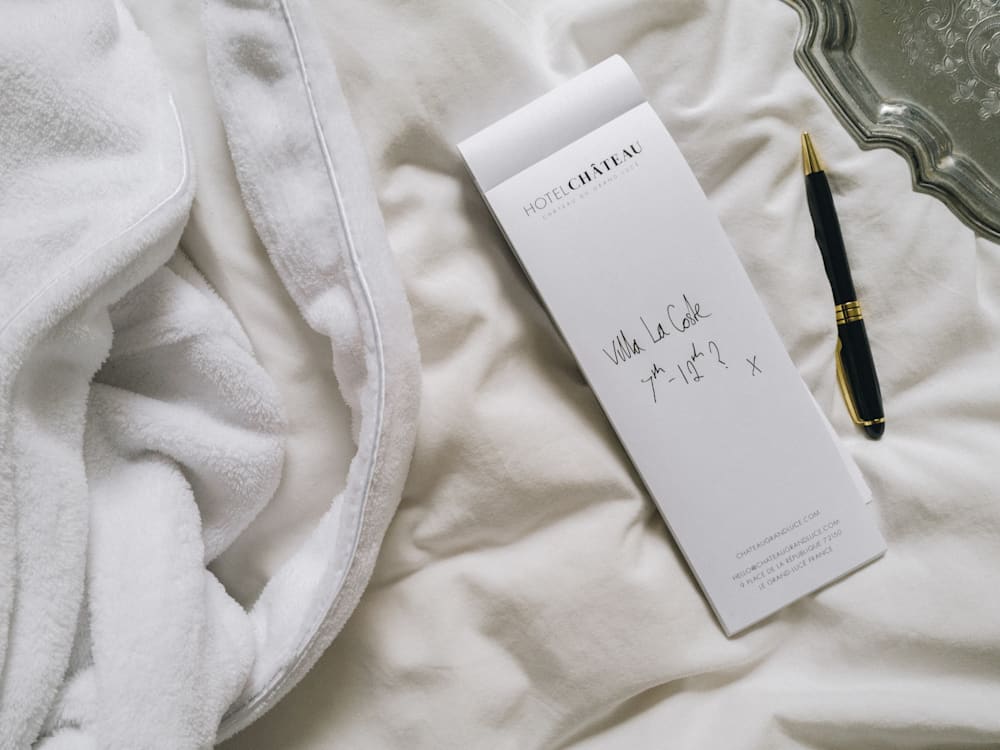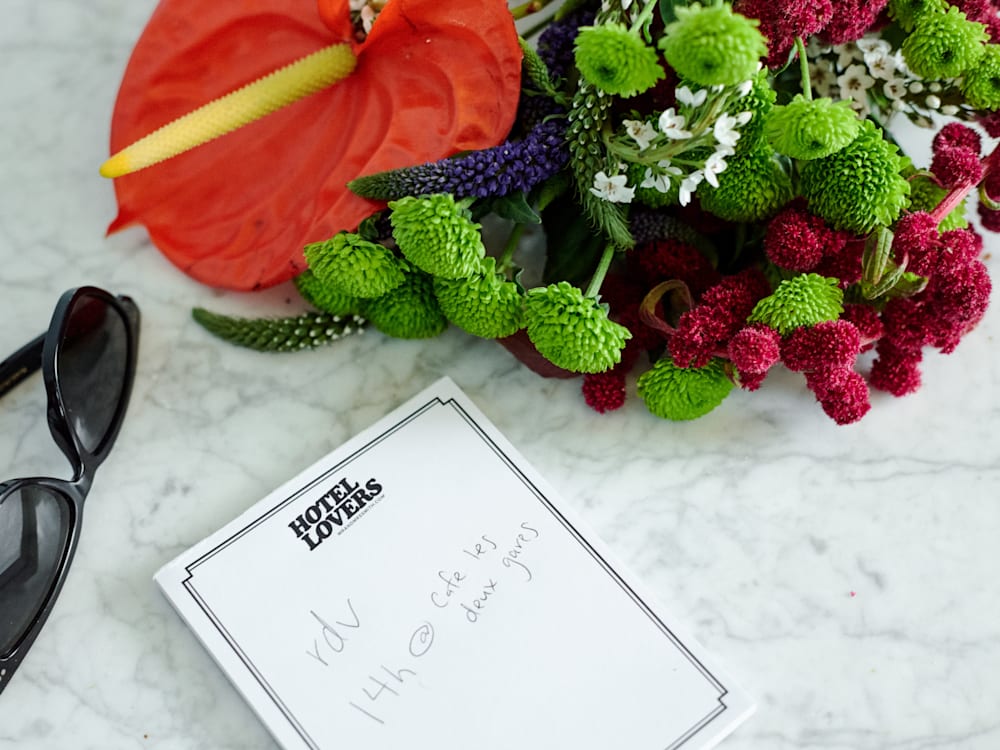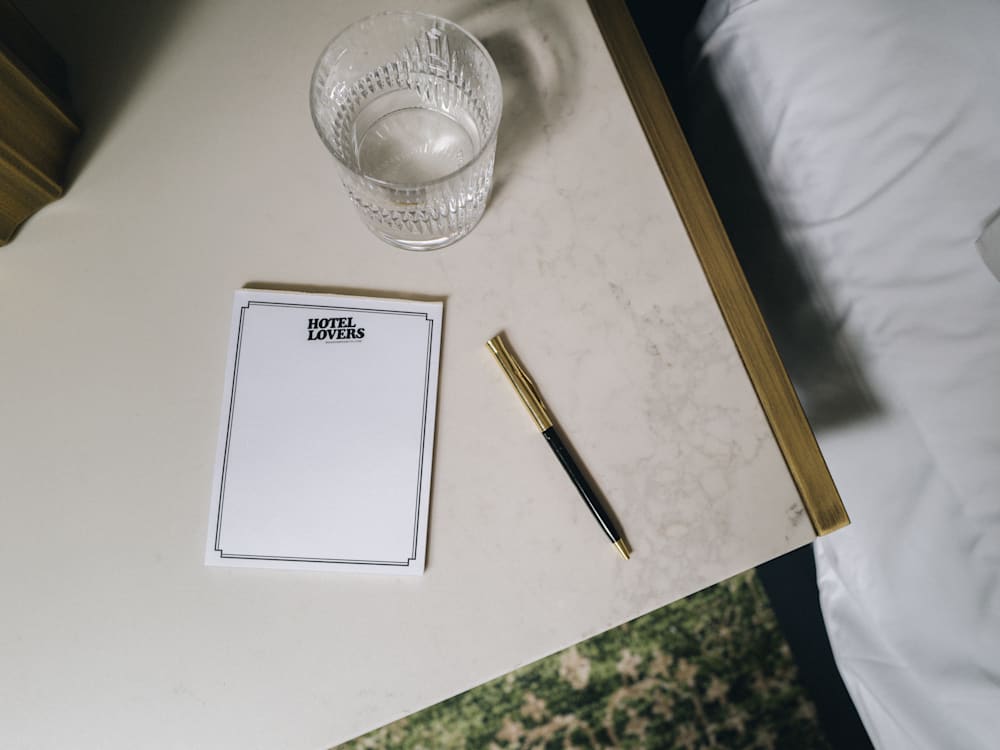The first time I encountered proper hotel stationery was in one of those old grand dame hotels in a south-east Asian port town. The sort of place where, a century or more ago, an eclectic collection of travellers would have put down roots for weeks, or even months. Spies, foreign correspondents, and industry titans brushed shoulders on the veranda and in the wood-panelled bar. Several renowned writers of the early 20th century supposedly even worked on some of their masterpieces there.
In this case, however, my friend and I – two 22-year-old backpackers – had splashed out on a room for the night in the name of a hot shower with water pressure and queen-sized beds with high-thread-count sheets.

To be perfectly honest, a century past its heyday, this grand dame was a bit shabby around the edges. But her architecture was still impressive and we’d just spent weeks sleeping in hostels, so it felt like we’d landed in a palace.
To his credit, the porter’s stoic mask held as he showed us around – until, that is, we giddily threw open our shutters and squealed at the discovery of a small balcony overlooking the ocean. We may have nostalgically imagined a refined, old-world stay, but I suppose we were a bit shabby around the edges, too.
And then, on the mahogany desk, I noticed a thin sheaf of papers. Picking them up, I was impressed by their weight and texture, along with the handsome lettering across the top proclaiming the hotel’s name and address. Someone had put time and care into this. Had chosen a paper that would last. Had designed it to impress a correspondent with the writer’s far-flung adventure.
Suddenly, my daydreams of elegant soirées, international intrigue, and literary inspiration felt within reach. This establishment may have fallen in the world’s esteem, and we may not have been its most illustrious guests, but here was a link to that glamorous past that was accessible even to little ol’ aspiring-writer me.
In the (many!) years since I sat down at that desk and scribbled out a few pages of what were no doubt some very pretentious thoughts and observations, I have been lucky enough to stay at a number of hotels that still believe signature stationery is part of the luxury.
Each time, I pull out my nicest pen – or borrow their branded ballpoint – to jot down some notes for an article, a one-off journal entry, or the first sketches of a story. I’ve written on stylised letterheads from the Line, composed thoughts on the textured notepads of the Hôtel Panache, and started a screenplay on elegant sheets at the Sunset Tower Hotel.

After all, it’s a storied tradition: the transient writer-in-residence. Everyone from Ernest Hemingway to Agatha Christie to Maya Angelou wrote masterpieces while staying in hotels around the globe. In New York’s iconic Chelsea Hotel alone, writers from Mark Twain to Dylan Thomas scribbled out works that we now revere.
Unfortunately, I’ve yet to write a novel on any hotels’ stationery. That sort of writing I pedestrianly save for my trusty laptop. With the stationery, it’s the connection to a slower, more purposeful sort of travel and communication that attracts me, as much as the words themselves.
I can imagine that I’m a resident, not just dropping into the city for a couple of days. The sort of visit that allows for the time to really get to know a place, to spend hours writing at a hotel table without worrying that I’ve missed some must-do experience or sight. The kind of stay that requires lengthy letters to loved ones back home.
When my grandparents died in 2012, we found one such stack of letters. Perhaps unsurprisingly, they were love letters from my grandfather to my grandmother, written before they were married.
In 1946, my grandfather was a lawyer in Washington DC, but his firm had him on a case in New York City, sending him there for weeks at a time. He had only recently met this vibrant young woman who had given him a new lease on life for the first time since returning home from the war in Europe. Almost every evening he would sit down at the desk in his hotel room and write her a letter, pouring his heart out.
As magical as these letters were in and of themselves, you can imagine my delight at discovering they were written on the hotel’s stationery. But I noticed something else, too.

At the top of the page, next to the hotel’s printed name and address, there was a pen-and-ink illustration of the building. And I recognised it. Because I had stayed there myself.
I’ll admit that I’d laughed at myself, back at that grand dame, when I saw its stationery as a portal to the past. But when I read these letters, written 66 years earlier in a room I’d also written in, I realised that perhaps I hadn’t been wrong.
A soliloquy on a soak: why the hotel bath also inspires real love
Kate Thorman is a writer of all trades whose journalism has appeared in the likes of Bon Appétit and Afar magazines, whose podcasts can be found on Spotify, and whose screenwriting is coming to a screen near you soon.
Photos by Louis AW Sheridan and Skip Hopkins



